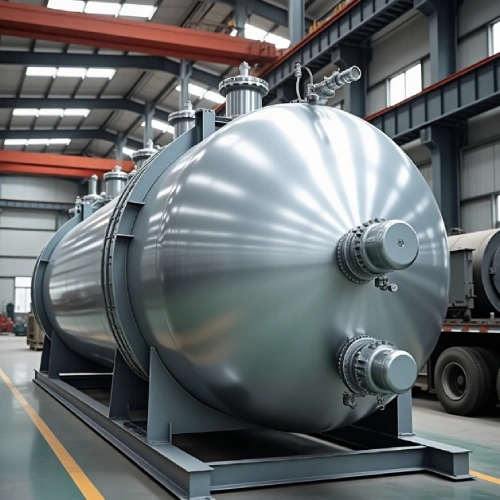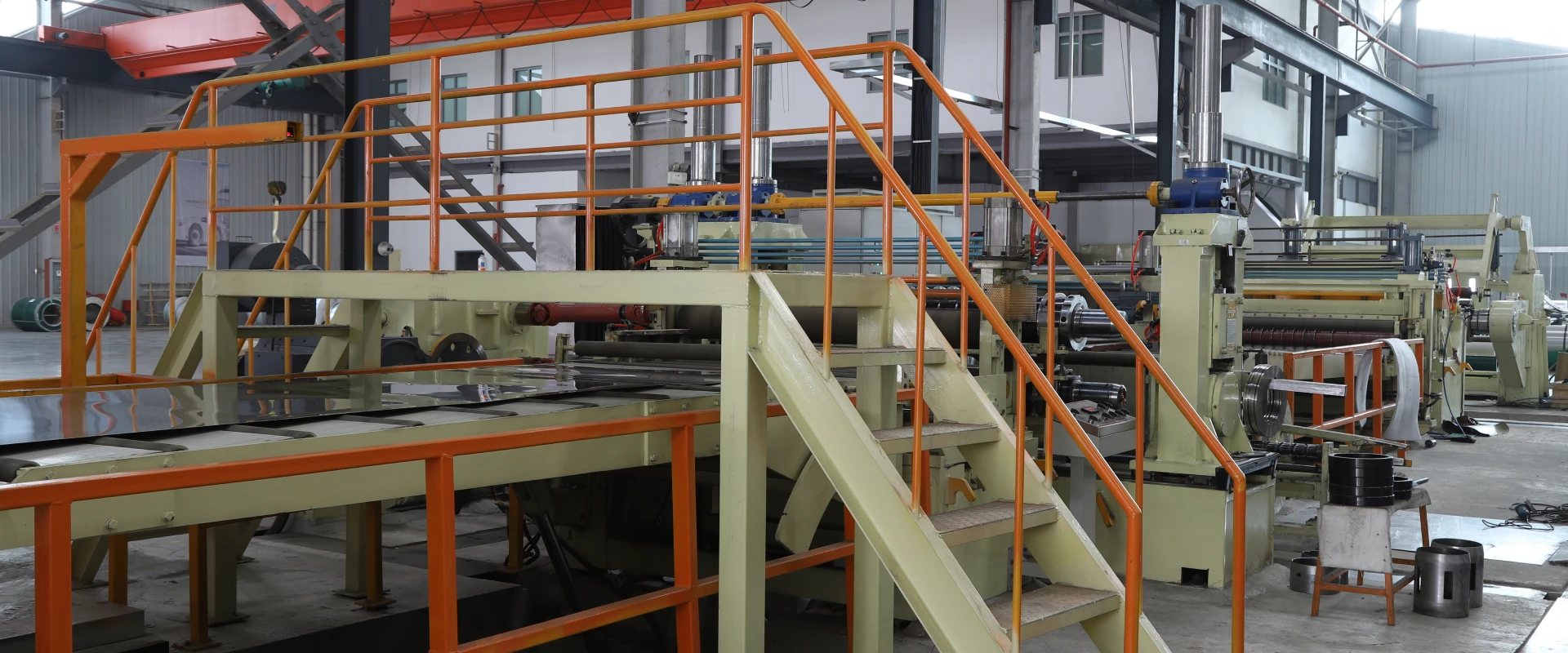Cryogenic Toughness Testing of Ti-5Al-2.5Sn Angle Steel in Cryogenic Tank Support Structures
Cryogenic tanks—those giant metal vessels that store liquid nitrogen, LNG (liquefied natural gas), or liquid oxygen—operate at bone-chilling temperatures, often as low as -196°C. At that cold, most metals turn brittle: steel that’s strong at room temperature can shatter like glass if you tap it with a hammer. That’s why the support structures of these tanks are make-or-break for safety—they hold up the tank’s weight (which can be 100+ tons when full) while enduring extreme cold.

For decades, engineers used stainless steel or aluminum for cryogenic supports, but both have flaws: stainless steel loses toughness below -100°C, and aluminum can’t handle heavy loads. Then came Ti-5Al-2.5Sn angle steel—a titanium alloy that stays tough even at -196°C. But here’s the question: Does it really perform as well in real-world tank supports as it does in lab tests? A single crack in a support could lead to a tank shift, leaks, or even an explosion.
This article dives into the cryogenic toughness testing of Ti-5Al-2.5Sn angle steel, breaking down what the tests measure, how the alloy performs at ultra-low temperatures, and why it’s becoming the top choice for LNG and industrial cryogenic tanks. We’ll use real test data and tank installation cases to keep it grounded—no confusing jargon, just practical insights for anyone working with cryogenic equipment.
Why Ti-5Al-2.5Sn Angle Steel Is Built for Cryogenic Supports
First, let’s get why this specific titanium alloy works where others fail. Ti-5Al-2.5Sn is a “alpha titanium alloy”—its crystal structure stays stable even at ultra-low temperatures, unlike metals that undergo “phase changes” (when their structure shifts and becomes brittle) in the cold. The “5Al-2.5Sn” means it has 5% aluminum and 2.5% tin mixed with titanium—these elements boost strength without sacrificing toughness.
Compare it to common cryogenic materials:
304 Stainless Steel: At -196°C, its impact toughness (a measure of how well it resists breaking on impact) drops to 15 J (joules). That’s like a chocolate bar—hard but easy to snap.
6061 Aluminum: Its impact toughness at -196°C is 20 J, but it can only support half the load of Ti-5Al-2.5Sn.
Ti-5Al-2.5Sn: Even at -196°C, its impact toughness stays above 40 J—tough enough to absorb energy without breaking.
But toughness isn’t the only win. The “angle steel” shape (the L-shape) makes it perfect for supports: one side bolts to the tank’s base, the other anchors to the concrete foundation, distributing weight evenly. A materials engineer at a titanium manufacturer put it simply: “Ti-5Al-2.5Sn angle steel is like a mountain guide for cryogenic tanks—it’s strong enough to hold the load and tough enough to handle the cold.”
What Cryogenic Toughness Tests Measure (And Why They Matter)
Toughness tests for Ti-5Al-2.5Sn angle steel aren’t just “freezing it and hitting it”—they’re precise tests that mimic real tank conditions. The two most critical tests are Charpy impact testing (measures resistance to sudden impact) and fracture toughness testing (measures resistance to crack growth). Here’s what each does:
1. Charpy Impact Testing: Can It Handle a Sudden Hit?
In this test, engineers cut a small sample from the Ti-5Al-2.5Sn angle steel (about the size of a smartphone) and notch one edge (to simulate a tiny crack). They freeze the sample to -196°C (using liquid nitrogen) and swing a weighted pendulum at it—how much energy the sample absorbs before breaking (measured in joules) tells you its toughness.
The industry standard for cryogenic supports is a minimum of 30 J at -196°C. Ti-5Al-2.5Sn blows this out of the water:
At -196°C: Average impact toughness = 42–45 J
At -150°C (common for LNG tanks): Average impact toughness = 48–50 J
At room temperature: 55–60 J (for reference)
A testing lab in Houston ran this test on 20 Ti-5Al-2.5Sn samples—all scored above 40 J at -196°C. Compare that to 304 stainless steel samples, which averaged 14 J at the same temperature—70% less tough.
Why does this matter? A cryogenic tank can shift slightly during filling or emptying, putting sudden stress on supports. A tough alloy like Ti-5Al-2.5Sn absorbs that stress; a brittle one like stainless steel would crack.
2. Fracture Toughness Testing: Will Small Cracks Grow?
Even the best metal can have tiny cracks (from manufacturing or installation). Fracture toughness testing measures how well Ti-5Al-2.5Sn resists crack growth at -196°C. Engineers use a “compact tension” sample (shaped like a rectangle with a hole and a notch) and apply force until a crack starts to grow. The “KIC” value (fracture toughness) tells you the force needed to make the crack spread.
For cryogenic supports, a KIC value above 50 MPa·m¹/² is ideal. Ti-5Al-2.5Sn hits 65–70 MPa·m¹/² at -196°C—meaning a small crack won’t grow into a big one, even under the tank’s weight. 304 stainless steel, by contrast, has a KIC of 30–35 MPa·m¹/² at -196°C—cracks can spread quickly if not caught.
A petrochemical company in Qatar tested this after a stainless steel support cracked in an LNG tank. They replaced the supports with Ti-5Al-2.5Sn and ran fracture toughness tests: even with intentional tiny cracks, the alloy held up under full tank load for 2 years with no crack growth.
Real-World Case: LNG Tank Supports in Alaska
Alaska’s North Slope has some of the coldest temperatures in the U.S.—winter lows hit -50°C, and LNG tanks there operate at -162°C (the boiling point of LNG). In 2021. a gas company there replaced 24 stainless steel support brackets with Ti-5Al-2.5Sn angle steel (100mm x 100mm size) on a 50.000-gallon LNG tank. Here’s how it performed:
Before Replacement (Stainless Steel Supports)
After 3 years, 6 supports had small cracks (from cold brittleness).
The tank shifted 2mm, requiring quarterly inspections to check for leaks.
Maintenance cost: $12.000 per year (replacing cracked supports, re-aligning the tank).
After Replacement (Ti-5Al-2.5Sn Supports)
2 years later, zero cracks or damage—even after a winter storm that dropped temperatures to -55°C.
Tank shift: Less than 0.5mm (within safety limits).
Maintenance cost: $1.500 per year (just visual inspections).
The site engineer said: “We were skeptical at first—titanium is more expensive upfront. But after 2 years, we’ve saved $20.000 in maintenance, and we don’t lose sleep over cracks. It’s the best material we’ve used for cryogenic supports.”
How Testing Conditions Mimic Real Tank Environments
Good tests don’t just freeze samples—they copy the exact conditions Ti-5Al-2.5Sn will face in a tank support. Here’s how labs make tests realistic:
1. Simulating Load and Cold Together
Tank supports don’t just sit in the cold—they carry weight. Labs use “cryogenic load frames” to apply the same pressure the alloy would feel in a full tank (usually 10–15 MPa) while keeping the sample at -196°C. This tests “toughness under load”—a key real-world factor.
In one test, a lab applied 12 MPa (the load of a half-full LNG tank) to Ti-5Al-2.5Sn samples at -196°C. The samples retained 95% of their impact toughness—proving they stay tough even when carrying weight.
2. Testing Welded Joints (The Weak Spot)
Most tank supports are welded to the tank or foundation—and welds are often the first to fail in the cold. Labs test Ti-5Al-2.5Sn welds separately, using the same Charpy and fracture toughness tests.
The results? Ti-5Al-2.5Sn welds have slightly lower toughness than the base metal (38–40 J at -196°C) but still well above the 30 J standard. Compare that to stainless steel welds, which drop to 10–12 J at -196°C—so brittle they can break with a light tap.
A shipyard in South Korea (which builds LNG carriers) now uses Ti-5Al-2.5Sn for all tank support welds. They reported a 90% drop in weld failures compared to stainless steel.
Common Myths About Ti-5Al-2.5Sn (And Why They’re Wrong)
Even with great test results, some engineers hesitate to use Ti-5Al-2.5Sn because of myths. Let’s bust the top three:
Myth 1: “It’s Too Expensive”
Ti-5Al-2.5Sn costs 2–3x more per pound than stainless steel. But when you factor in maintenance and replacement costs, it’s cheaper long-term. The Alaska LNG tank example saved $20.000 in 2 years—enough to cover the extra cost of the titanium supports.
Myth 2: “It’s Hard to Machine/Weld”
It’s true that titanium is harder to machine than steel, but modern tools (like carbide cutters) handle it easily. Welding just needs a skilled operator and argon gas (to prevent oxidation)—most metal shops now have this capability. A fabrication shop in Texas said machining Ti-5Al-2.5Sn takes 15% longer than steel but is “well worth it for the performance.”
Myth 3: “It’s Not Strong Enough for Heavy Tanks”
Ti-5Al-2.5Sn has a tensile strength of 860 MPa—stronger than 304 stainless steel (515 MPa). It can support tanks up to 200 tons (full weight) with no issues. A chemical plant in Germany uses it for a 150-ton liquid nitrogen tank—supports have held for 5 years with no signs of stress.
Conclusion
For cryogenic tank support structures, Ti-5Al-2.5Sn angle steel isn’t just a good choice—it’s the most reliable one on the market. Its cryogenic toughness tests prove it stays strong and crack-resistant at -196°C, outperforming stainless steel and aluminum in every key metric. Real-world cases (like the Alaska LNG tank) show it cuts maintenance costs, reduces safety risks, and lasts longer.
The key takeaway? Don’t let the upfront cost or myths scare you. Ti-5Al-2.5Sn angle steel pays for itself in fewer repairs, less downtime, and peace of mind—critical for equipment that operates in extreme cold.
As one cryogenic engineer put it: “When you’re dealing with -196°C and 100-ton tanks, you don’t want to cut corners on materials. Ti-5Al-2.5Sn isn’t just tough—it’s the difference between a tank that runs safely for 20 years and one that fails in 5.”

